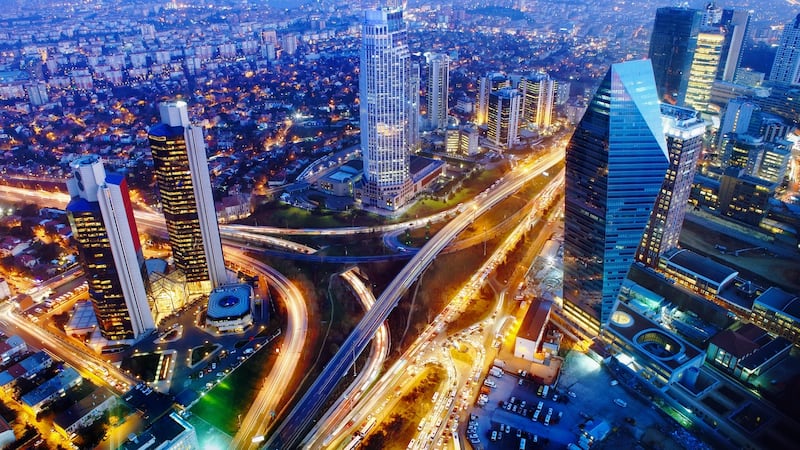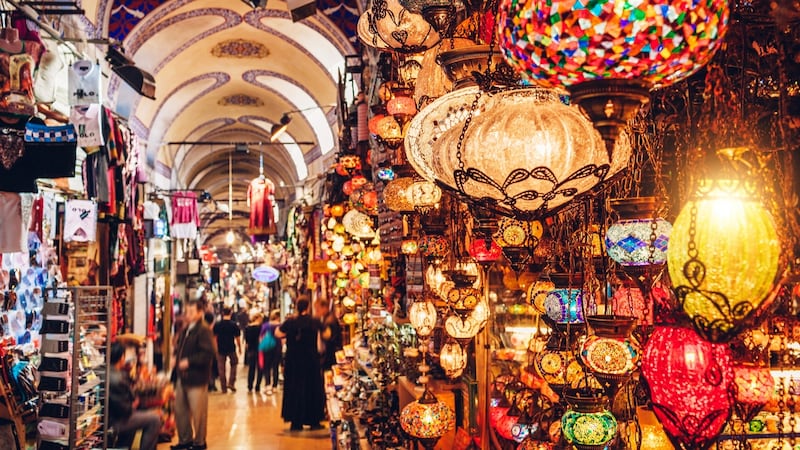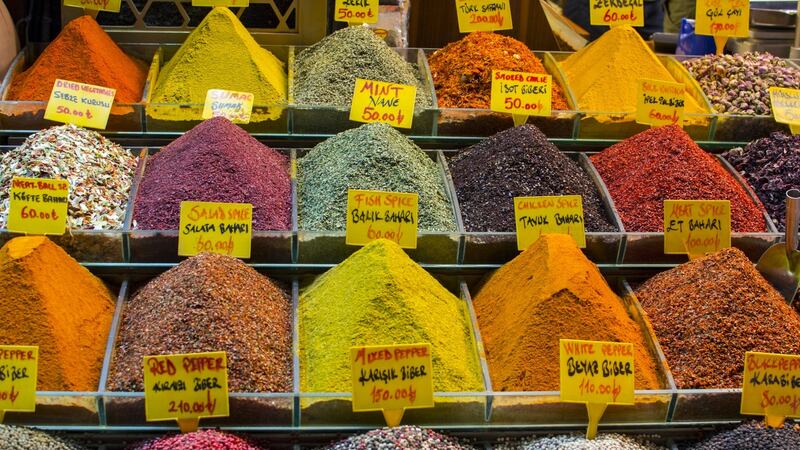Of the few places on earth that have mastered the art of metropolitan living while keeping its soul and intimacy alive, Istanbul is undoubtedly the most beguiling.
This vibrant and multi-nuanced city blends different cultures, economic backgrounds and ages across a complex warren of distinct neighbourhoods ranged over seven hills. The buildings stretch from the early Byzantine to the Ottoman and the ultra-modern; blending in a ramshackle yet harmonious way.
Tourist numbers have diminished since a suicide bombing in the area of Sultanahmet Square (near the Blue Mosque and Hagia Sophia) in 2016, followed by a mass shooting at a nightclub and an attack on Istanbul Atatürk Airport in which 41 people died.

This crippled the tourist industry, as intended, but the Turkish government brought tanks and troops onto the streets and there have been no incidents since.
The atmosphere is welcoming and friendly, despite the military presence, and there’s palpable appreciation for visitors who come.
Your pre-eminent activity in the city should be walking; it’s remarkably safe and supportive, with no hawkers or overt tourist trappings, apart from the shoe-shine boys who might drop their brushes as a ploy to scam you into getting a shoe-shine. Otherwise you can trust that people will care for you, though the stall holders in the bazaars will still manage to make a profit, no matter how great the bargain appears to be.
Make sure to start each day with the finest traditional breakfast – bal-kaymak (clotted water buffalo cream with wild honey), simit (freshly baked sesame bread rings), beyaz (salty white cheese from goat, sheep or cow milk) and muhammara (an addictive red pepper and walnut spread). Afterwards, walk to either a bazaar or a mosque, depending on whether you seek activity or tranquillity.

Bazaars
The best known bazaars are the Grand Bazaar and the Spice Bazaar. The former is more than 500 years old, and is still one of the largest covered bazaars in the world, encompassing 60 narrow lanes, 4,500 shops, 60 restaurants, 18 fountains, 12 mosques, and even a school.
It grew gradually from a small vaulted warehouse in the 15th century, to this roofed labyrinth of lanes, shops and hans (caravanserais) which many locals still use as their main shopping destination, despite seeming like something straight from the Medieval Age.
You’ll inevitably get lost, stumbling along the way upon hand-tooled leather bags, hammered-copper pans, traditional çini pottery, silk ikat fabric and glittering zultanite rings. The artisans will invite you in to their workshops and serve you tea, but without any pressure to buy.
The Spice Bazaar is smaller with only two main entrances as opposed to the 22 in the Grand Bazaar, each of which is manned by a soldier with a submachine gun and a metal detector. It was constructed in the 1660s as a source of revenue for the school, hamam and hospital that were within the same mosque complex. This was the last stop for the camel caravans that plied the Silk Road from China, India and Persia, and the produce were the freshest and most diverse available.

It is still the same today, with a bewildering array of fresh and dried spices, nuts, fruit and sweets arranged in mesmerising displays of vivid colours, from jewel-like Turkish delight, to intoxicating herbal teas and perfectly preserved dried fruits and berries. Around the perimeter of the bazaar are lanes of stalls selling the freshest farmers’ produce from Anatolia, including an alluring selection of cheeses, fish and freshly picked nuts.
There are many other bazaars with a similar array of produce, and maybe cheaper prices, such as the Kadikoy Food Bazaar on the Asian side (the city famously straddles two continents, divided by the Bosporus) which offers an equally alluring and aromatic showcase of fish, mushrooms, tangy pickles and herbal remedies.
Mosques
Of the city’s numerous mosques, one of the finest is the renowned Blue Mosque, a 17th-century cascade of domes crowned by six slender minarets, with walls clad in tens of thousands of blue Iznik tiles and 260 windows, and an enormous central prayer space that is both calming and humbling. It is a profoundly contemplative space that gives a stirring insight into the allure of Islam.
To experience a similar sense of wonder and sensual allure, with far less tourists, visit the Süleymaniye Mosque, which has equally fine Iznik tiles, elegant mural calligraphy, stained-glass windows, and woodwork inlaid with mother-of-pearl. Spending even a few moments sitting on the persimmon-coloured woollen carpet is strangely restorative.
Don’t leave this area without first stopping into one of the cafes right outside the mosque. They used to be teahouses selling opium, but now specialise in fasulye (bean stew), though the street is still known as the Market of the Addicts.
You must also find Vefa Bozacisi, a tiny bar which has been selling the best boza in Turkey since 1876. Boza is a sweet fermented drink made with bulgar or other grains, that has been drunk here for a millennium. If you like it then seek out the street-sellers offering salep too, an even more complex traditional drink made with the root of local wild orchid. It is so precious that it is illegal to export orchid root from Turkey.
Palace
The other unmissable sight in Istanbul is the Topkapi Palace, the magnificently opulent court of the Ottoman empire that ruled a vast swathe of the world between the 14th and early 20th centuries.
Even those who are normally bored by castles or stately homes should at least visit the harem, a sprawling network of timber dormitories, marble bathing rooms, gilt pleasure halls and finely upholstered private chambers where the sultan kept his 300 concubines.
It offers an insight beyond the clichés of libidinous viziers, ambitious courtiers and scheming eunuchs to the reality of Ottoman culture, in which women had a surprising degree of power, especially the sultan’s main wife who owned large landed estates which she controlled through black eunuch servants.
If we are choosing to impact the planet by taking a flight in this era of climate change, it behoves us to try to engage with local culture as much as possible; and fortunately Turkish life unfolds in public in tea gardens, coffeehouses, taverns and kebab restaurants, where locals are keen to engage, so you can come home with a deeper understanding of the impact of things like the Syrian war, the shift towards Islamic fundamentalism and the government ban on Wikipedia.
Also, by spending time with locals you’ll be introduced to the best street foods, such as midye dolma (mussels with rice filling), kokoreç (a sandwich of lamb intestines), çig köfte (raw spicy meatless meatballs), and freshly baked cheese böreks from local bakeries.
Hair transplant
Finally, the one question you are going to be left with after your holiday is: why are there so many men with bandaged heads? It is not due to any propensity for domestic scuffles, but because the city has become a world centre for cheap hair transplant surgery. Insecure men flock here to have their bald patches treated at a tenth of the cost available elsewhere, and the clinics offer free sightseeing while the hair follicles are bedding into place.
Of all the weekend getaways one can take from Dublin, a trip to Turkey or Morocco will expand your world view the most; we owe it to ourselves to try it.
Flights were provided by Turkish Airlines, which fly Dublin to Istanbul from €199 return including taxes, with business class from €950. turkishairlines.com











